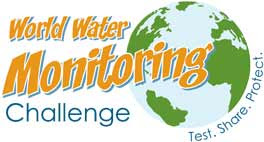 |
| Source: How Stuff Works |
Water is an absolute essential of human
life, and every form of life requires it to exist. It is one of the most
important substances on earth. Water pollution is a pressing environmental
problem. It is important to learn how to identify, take care of, and prevent
this occurrence from happening. Monitoring
provides valuable information such as data on the conditions of water resources
and whether these waters are safe and healthy.
World Water
Monitoring Day (WWMD)
World Water Monitoring Day (WWMD) takes
place on September 18 every year. WWMD
was initiated by America's Clean Water Foundation in 2003. WWMD is still
officially observed on September 18, but since 2009, the testing and reporting
period has been extended from March 22 through December 31. In January 2015 the
management of World Water Monitoring Day was transferred to Phillipe Cousteau's
educational non-profit EarthEcho International from the Water Environment
Federation (WEF) and the International Water Association (IWA). World Water
Monitoring Day (WWMD) has been renamed the "World Water Monitoring
Challenge" to promote greater involvement in an extended timeframe, and
year-round water quality monitoring. It is an impressive initiative that has
made an extraordinary difference.
It is an international global educational outreach program for volunteers that aims to raise public awareness and involvement in globally protecting water resources, the importance of water quality, and water quality monitoring. This is done by empowering citizens to carry out basic monitoring of their local water bodies. People of all ages get an opportunity to monitor the quality of their local water sources. A test kit assists people to sample local water bodies for a set of water quality parameters including temperature, acidity (pH), clarity (turbidity) and dissolved oxygen (DO). Dissolved oxygen and pH are done by putting little tablets into the provided tubes. Turbidity is done by putting the water in a plastic can and observing a black and white sticker at the bottom. Temperature is done with a plastic strip that turns different shades on the numbered degrees. These basic, low cost water test kits can be ordered through the World Water Monitoring Challenge website (www.monitorwater.org). Conducting water tests as part of a school’s programme or community initiative assists to collect valuable data and, moreover, raises awareness among participants about water quality and how their actions can directly and indirectly impact on their local water resources. In this way, an entire community can get involved in making sure everyone has access to clean fresh water.
Thereafter, this information is shared
through various resources, including a global water quality database, the World
Water Monitoring Challenge Website and with participating communities around
the globe.
This day is worth supporting and promoting
as it has assisted in keeping our global water resources healthy!
References


